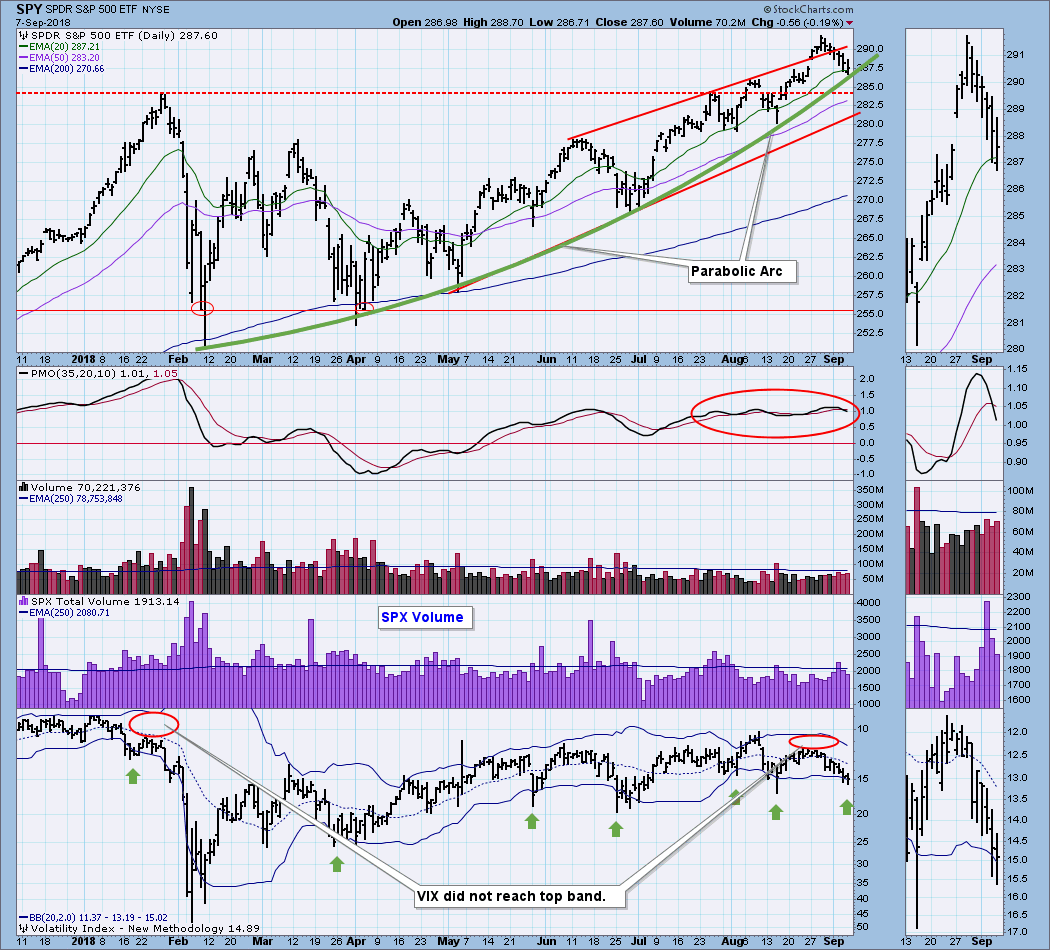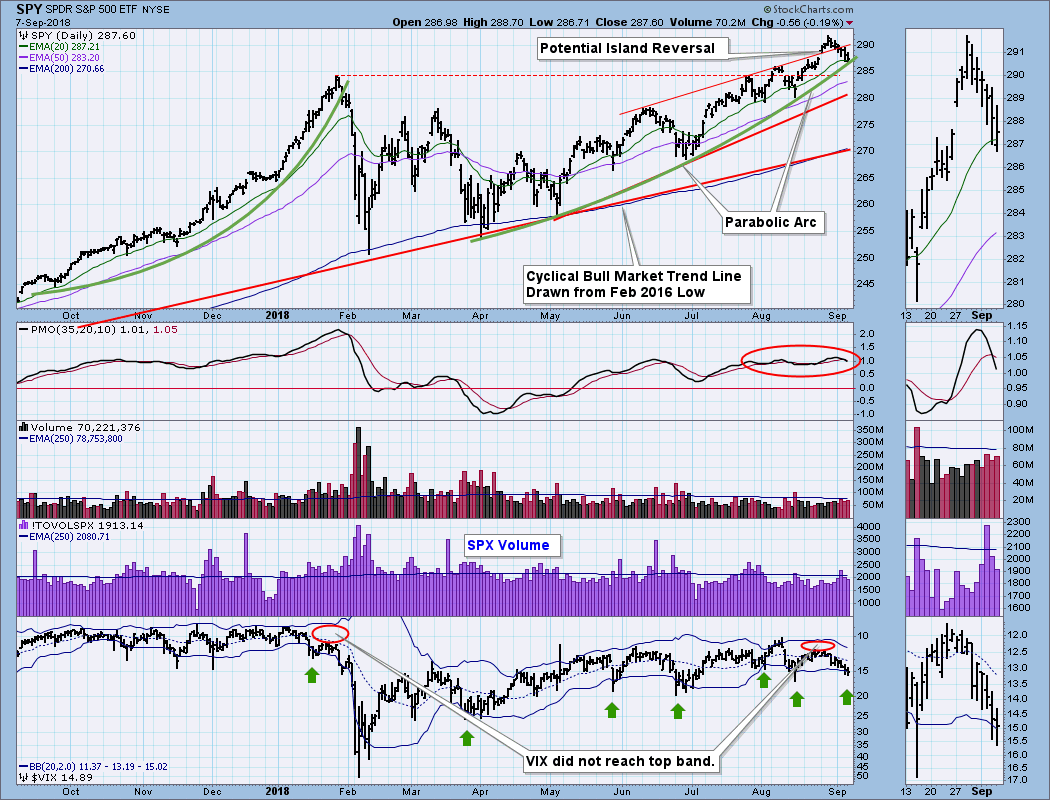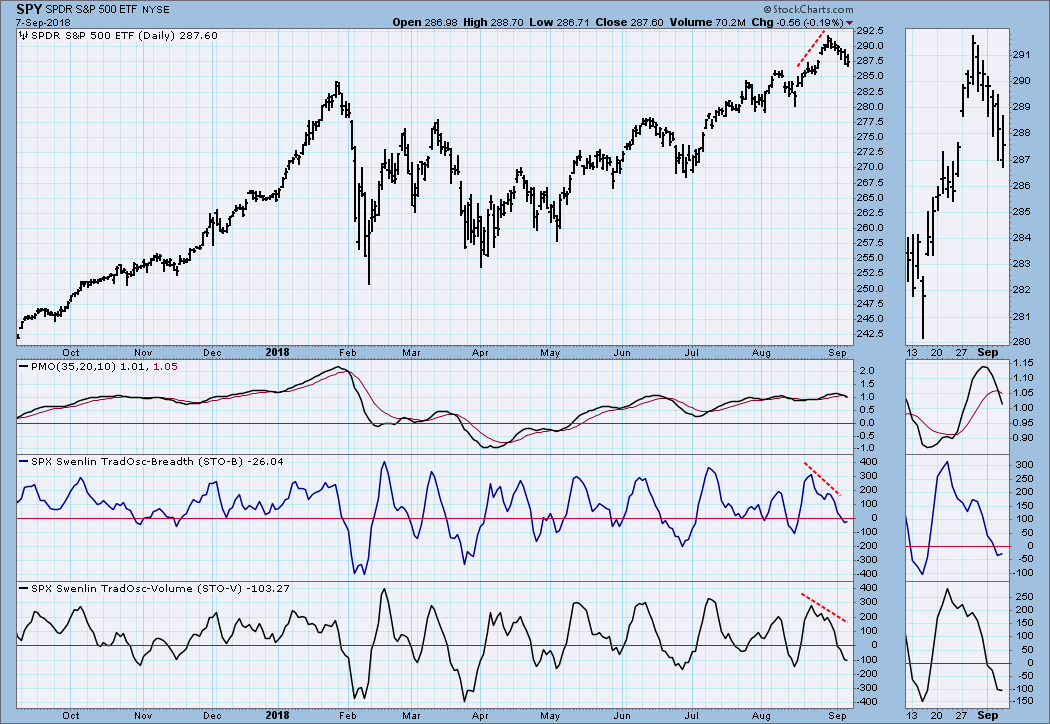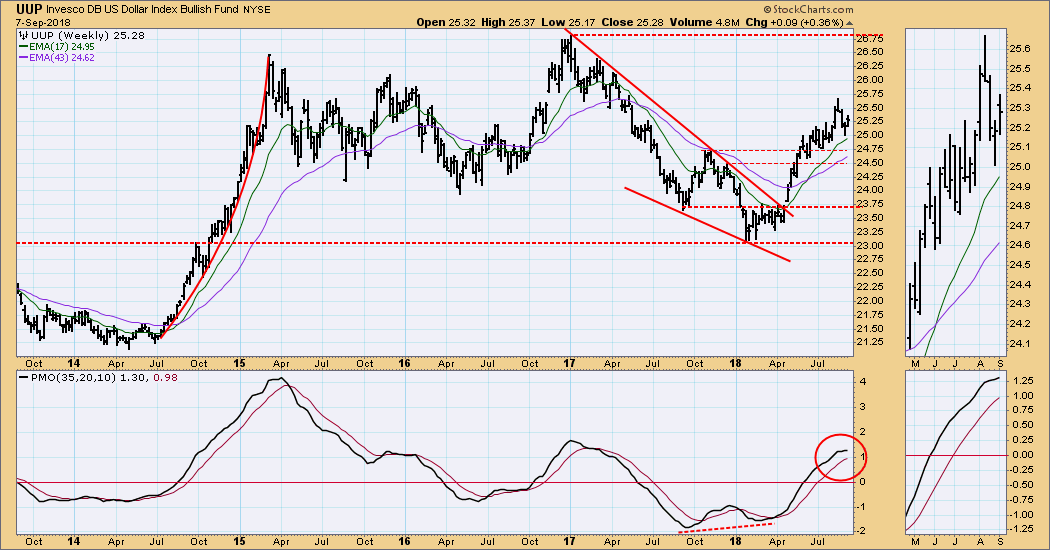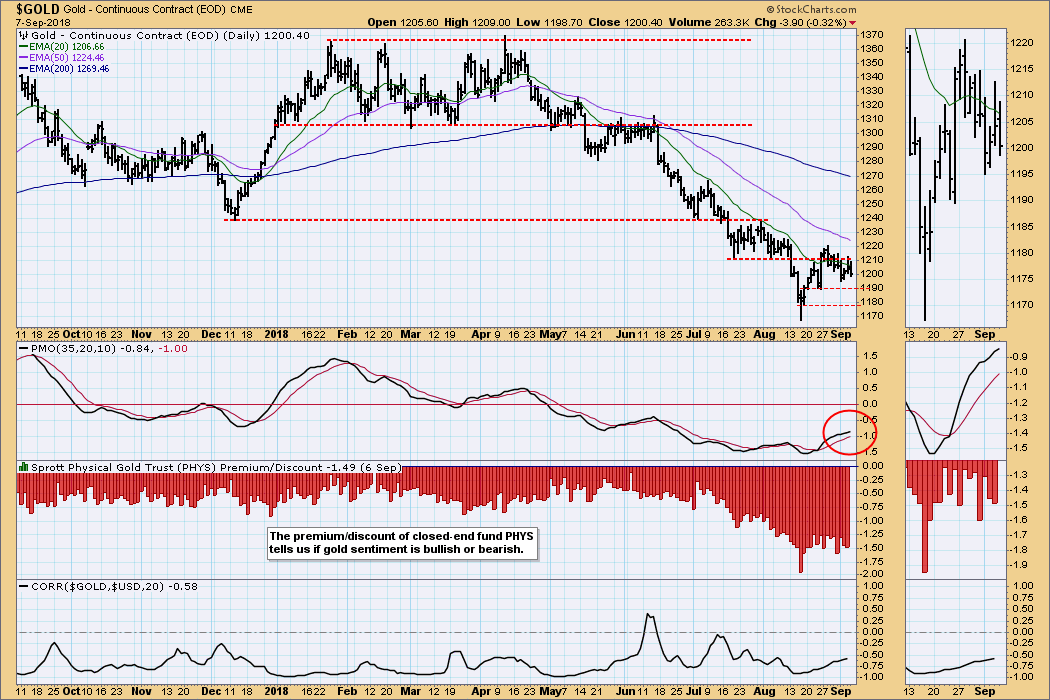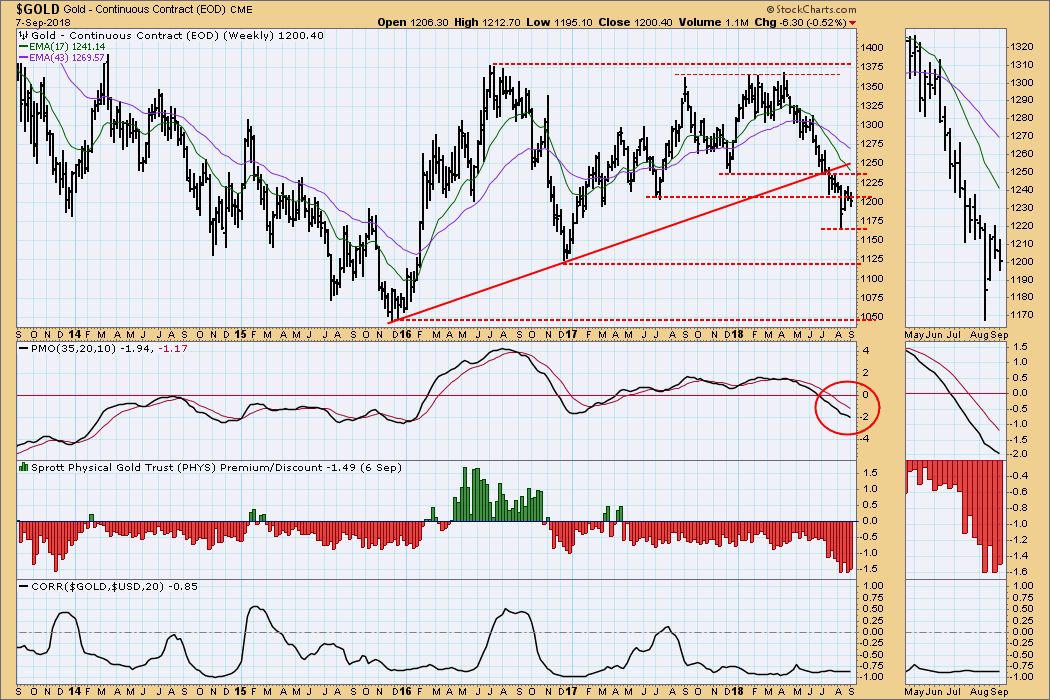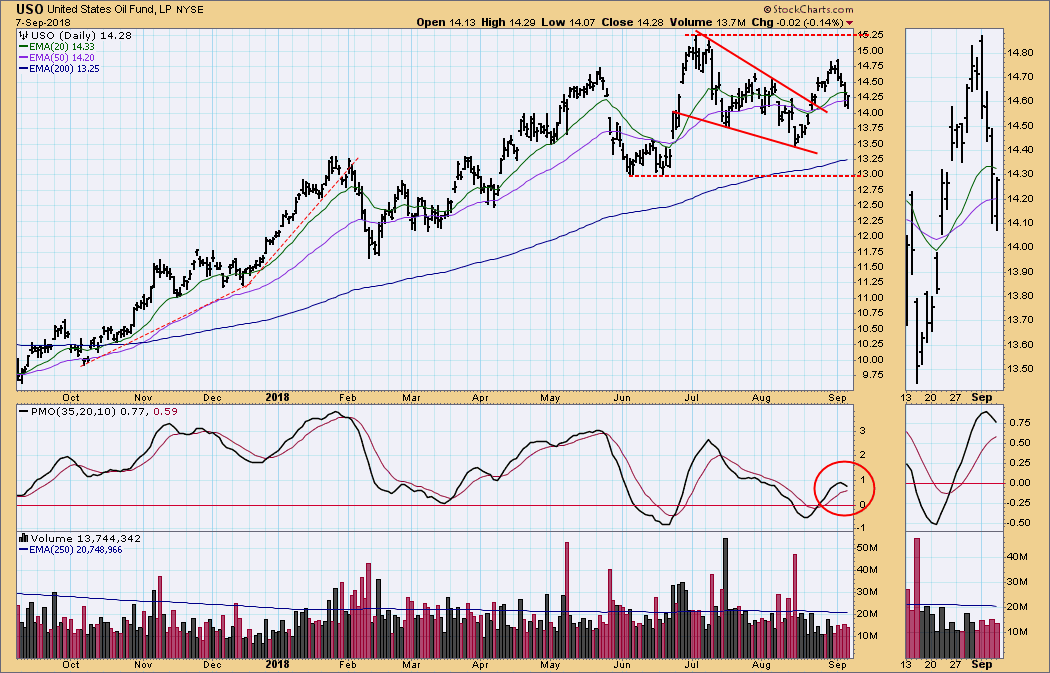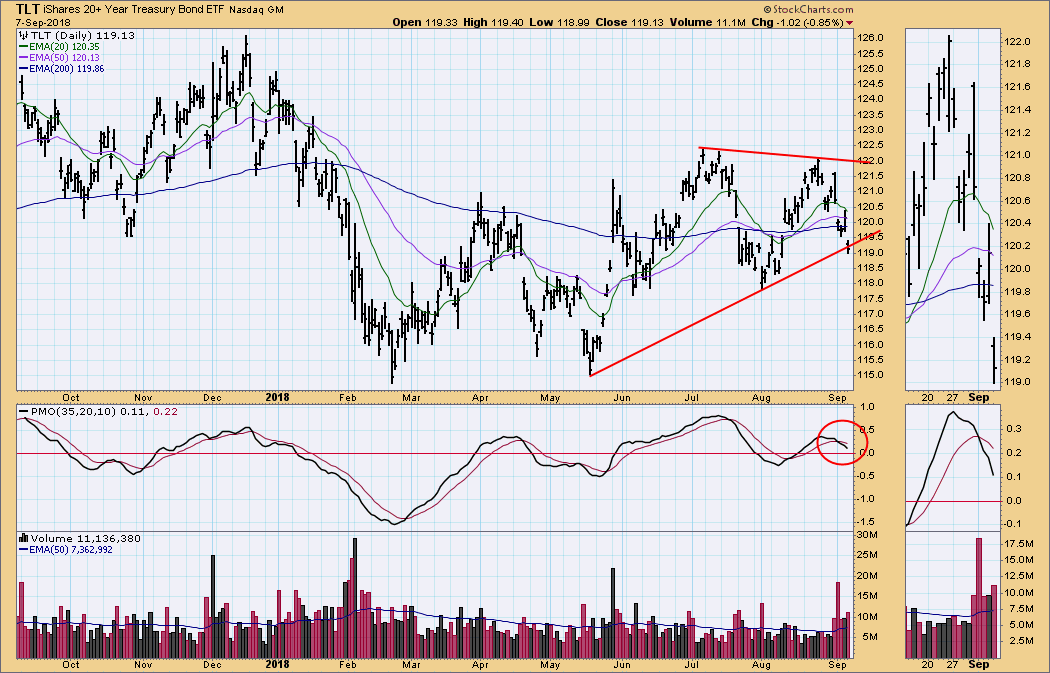
Last week we were looking at a possible bearish island reversal on one hand, and nascent parabolic advance on the other. This week's decline filled the island gap, making the island proposition moot. The decline also reached down to touch the parabolic arc, but so far that 'support' has held. Of more immediate interest is the gap between the most recent VIX top and the top Bollinger Band. More on that to follow.
The DecisionPoint Weekly Wrap presents an end-of-week assessment of the trend and condition of the stock market (S&P 500), the U.S. Dollar, Gold, Crude Oil, and Bonds.
INTERNATIONAL MARKETS
This section will not become a regular feature in this report, but I thought it was worth covering this week. I don't really pay much attention to non-U.S. markets, but recently I heard a comment they were nearly all doing poorly by comparison. This prompted me to take a stroll through the international charts, and I found that it was true. The chart below is fairly typical of what I found -- a January crash, then sideways meandering, dropping off more recently. This could explain why the U.S. market is doing so well, but I don't think of this as particularly good news, because I don't think the U.S. market can continue to do well with the rest of the world heading into a ditch.
SECTORS
Each S&P 500 Index component stock is assigned to one, and only one, of 10 major sectors. This is a snapshot of the Intermediate-Term and Long-Term Trend Model signal status for those sectors.
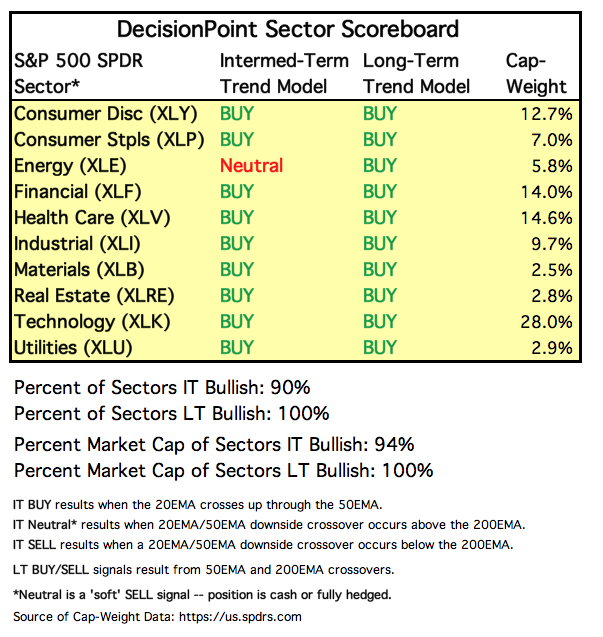
STOCKS
IT Trend Model: BUY as of 5/11/2018
LT Trend Model: BUY as of 4/1/2016
SPY Daily Chart: As I said earlier, the parabolic has so far survived the recent pullback; however, the issue with the VIX does make me nervous. Note that the VIX moved up from its August low but failed to reach the top band, topping just above the 20SMA, then falling back to the lower band. The last time the gap was this pronounced was in January just before the crash. I'm not saying the market is about to crash, but I don't like the setup. Of bullish note, SPX volume contracted the last two days, and the daily PMO remains in the narrow positive range.
SPY Weekly Chart: This time frame remains positive, although the weekly PMO is decelerating.
Short-Term Market Indicators: The STO-B and STO-V are at bull market oversold levels, and the STO-B has bottomed.
Intermediate-Term Market Indicators: Negative divergences persist on all three indicators in this time frame.
Conclusion: As usual, the chart immediately above provides the best overview for the intermediate term. The market is in near-record territory, with primary indicators flashing negative divergences. In a bull market such divergences are not usually a problem. They don't say 'sell' as much as they say 'not a good time to buy.' The short-term problem with the VIX I mentioned tells us to really be on our toes until it clears. Background issues are market overvaluation and international market weakness.
DOLLAR (UUP)
IT Trend Model: BUY as of 4/24/2018
LT Trend Model: BUY as of 5/25/2018
UUP Daily Chart: After the island reversal last month, UUP has returned to the confinement of the rising wedge formation. I'm not sure if that interpretation is strictly kosher, but I think it is useful. My expectation is that the formation will resolve downward.
UUP Weekly Chart: The weekly PMO was getting ready to top last week, but this week's positive price action bent it higher. While the daily chart looks a bit negative, this time frame is still bullish.
GOLD
IT Trend Model: NEUTRAL as of 5/2/2018
LT Trend Model: SELL as of 6/22/2018
GOLD Daily Chart: While the daily PMO is above the signal line and rising, gold appears to be in a retest mode. I see possible support at 1190 and 1180.
GOLD Weekly Chart: Gold bounced off the August low, and it now seems to be headed for a retest. It could find support before reaching that low, and, of course, it may not find support until it reaches a much lower price. At this point, I am looking for a bullish outcome, so the weekly PMO will need to bottom soon.
CRUDE OIL (USO)
IT Trend Model: BUY as of 8/24/2018
LT Trend Model: BUY as of 11/2/2017
USO Daily Chart: Last month USO broke out of a falling wedge formation. The daily PMO bottom that preceded the breakout was full and solid, encouraging us to expect a rally to the July highs; however, the rally fizzled, and the pullback was strong enough to cause the PMO to top.
USO/$WTIC Weekly Chart: For the last six months crude ($WTIC) has maintained a range between about $63 and $75. I believe abundant supply and overhead resistance on the chart will prevent price from moving higher than the top of that range. For USO there is a PMO negative divergence, and the rising trend line is about to be challenged.
BONDS (TLT)
IT Trend Model: BUY as of 8/15/2018
LT Trend Model: BUY as of 8/20/2018
TLT Daily Chart: For the last two weeks price has been very erratic and choppy, but it is clearly in a down trend from the August high. The rising trend line drawn from the May low was penetrated on Friday, and the PMO configuration implies still lower prices to come.
TLT Weekly Chart: Triangle or head and shoulders pattern? I can't argue with either assessment, but I'm sticking with the head and shoulders because the structure will be useful for downside projections if the neckline is violated. The weekly PMO has topped again, and the Fed is expected to raise interest rates later this month, so a downside resolution seems likely.
**Don't miss any of the DecisionPoint commentaries! Go to the "Notify Me" box toward the end of this blog page to be notified as soon as they are published.**
Technical Analysis is a windsock, not a crystal ball.
Happy Charting!
- Carl
NOTE: The signal status reported herein is based upon mechanical trading model signals, specifically, the DecisionPoint Trend Model. They define the implied bias of the price index based upon moving average relationships, but they do not necessarily call for a specific action. They are information flags that should prompt chart review. Further, they do not call for continuous buying or selling during the life of the signal. For example, a BUY signal will probably (but not necessarily) return the best results if action is taken soon after the signal is generated. Additional opportunities for buying may be found as price zigzags higher, but the trader must look for optimum entry points. Conversely, exit points to preserve gains (or minimize losses) may be evident before the model mechanically closes the signal.
Helpful DecisionPoint Links:
DecisionPoint Shared ChartList and DecisionPoint Chart Gallery
Price Momentum Oscillator (PMO)
Swenlin Trading Oscillators (STO-B and STO-V)

